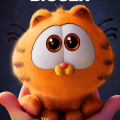Inside Out 2
When I first heard that Pixar was releasing Inside Out 2, I experienced a wave of excitement that was almost palpable. The original film left an indelible mark on me, capturing the complexities of human emotions through the eyes of a then-11-year-old girl named Riley. As someone who finds joy in exploring the labyrinthine corridors of the human psyche, the sequel appeared to be a promising opportunity to dive deeper into Riley's evolving emotional landscape. The film does not disappoint, delivering a compelling narrative that is both heartfelt and visually stunning.
World of Emotions
The sequel opens with Riley, now a teenager, blowing out the candles on her 13th birthday cake. The innocence of her childhood has been replaced by the turbulence of adolescence, symbolized by metal braces and a stubborn pimple. In the brightly colored, bustling headquarters of her mind, Joy (Amy Poehler) continues to lead the ensemble of emotions that includes Sadness (Phyllis Smith), Anger (Lewis Black), Fear (Tony Hale), and Disgust (Liza Lapira). This familiar setting immediately draws you back into the unique concept that captivated audiences in the original film.
The Emergence of New Emotions
As expected, puberty introduces new emotions to Riley's internal team. Anxiety (Maya Hawke), a carrot-colored sprite with jumpy eyebrows, takes center stage. Her arrival is almost theatrical, akin to a dramatic curtain-raiser that sets the tone for Riley's new emotional journey. Anxiety’s companions are Envy (Ayo Edebiri), Embarrassment (Paul Walter Hauser), and Ennui (Adèle Exarchopoulos), a particularly memorable character with a French accent that adds a touch of worldly weariness to the mix.
Transitioning Through Adolescence
Riley's experience at a girls’ hockey camp forms the crux of the narrative, separated from her parents and confronting new social dynamics. This storyline offers fertile ground for the filmmakers to explore various dimensions of Anxiety and her compatriots. Riley’s emotional turmoil is conveyed through a mesmerizing blend of visuals and dialogue, making her journey both relatable and poignant.
A Visual Spectacle
The film's visual design is nothing short of spectacular. The interiors of Riley's mind are rendered with intricate detail, and the emotional headquarters is a feast for the eyes. The color palette shifts to reflect Riley’s different emotional states, a visual storytelling technique that adds depth to the narrative. One standout scene features Anxiety spinning out of control, depicted as a rapidly rotating orange whirlpool. This image captures the overwhelming nature of emotional upheaval, offering a visceral experience for the audience.
Crafting Emotional Depth
One of the film’s triumphs is how it captures the multifaceted nature of emotions. While Joy is often sidelined by the new emotions, her attempts to reclaim her role are both humorous and heartbreaking. Sadness, too, has her moments, offering a counterbalance to Anxiety’s frenetic energy. The film doesn’t shy away from depicting the messy, often contradictory nature of human emotions, making it a nuanced portrayal of adolescence.
Subtle Humor and Relatable Moments
The film is replete with moments of subtle humor that are both endearing and insightful. Whether it's Embarrassment blushing furiously or Ennui's deadpan delivery, the humor serves to lighten the narrative while adding layers of relatability. These moments provide a welcome relief from the more intense scenes, ensuring the film strikes a balanced emotional tone.
A Skillful Balance of Light and Dark
While the film explores some darker themes, it does so with a gentle touch, akin to a parent guiding their child through a challenging phase. Riley's struggles with her new emotions are depicted with empathy, avoiding the pitfalls of melodrama. The filmmakers manage to convey the gravity of her experiences while maintaining the film’s overall optimism.
The Role of Nostalgia
A particularly interesting character is Nostalgia (June Squibb), who makes a brief but impactful appearance. Although she is quickly shooed away by Joy and Sadness, her presence is a reminder of Pixar’s ability to evoke sentimental longing. The decision to limit her role is likely a deliberate one, ensuring the film doesn’t become overly self-referential.
A Teenager's Emotional Complexity
As Riley navigates her teenage years, the film captures the emotional complexity inherent in this life stage. Her interactions with friends, her newfound independence, and her internal struggles are portrayed with authenticity. This makes Riley's journey not just a coming-of-age story but a universal exploration of growing up.
The Importance of Emotional Wellness
At its core, Inside Out 2 is a story about finding emotional balance. The film underscores the importance of acknowledging and integrating new emotions, rather than suppressing them. It’s a message that resonates not just with adolescents but with anyone navigating the complexities of life.
A Successful Sequel
Sequels often struggle to live up to their predecessors, but Inside Out 2 manages to do so with grace. The film retains the charm and ingenuity of the original while introducing new elements that add depth to the story. The seamless transition between Riley's external experiences and her internal emotional landscape is a testament to the filmmakers' skill.
Storytelling at Its Finest
The narrative structure of Inside Out 2 is tight and well-paced. The story flows naturally, with each scene contributing to the overall arc. The dialogue is crisp and evocative, capturing the nuances of teenage life. This is storytelling at its finest, where every component works in harmony to create a cohesive whole.
Engaging for All Ages
One of the film’s greatest strengths is its ability to engage viewers of all ages. While children will be enchanted by the colorful characters and dynamic visuals, adults will appreciate the deeper emotional themes. It’s a film that fosters empathy and understanding, making it a rewarding experience for the whole family.
Conclusion: A Worthy Successor
Inside Out 2 is a worthy successor to the original, capturing the essence of what made the first film so special while expanding its emotional terrain. It’s a visually stunning, emotionally resonant journey that offers valuable insights into the complexities of growing up. As the credits rolled, I found myself grateful for this exploration of emotions, a reminder of the beauty and challenge of the human experience.
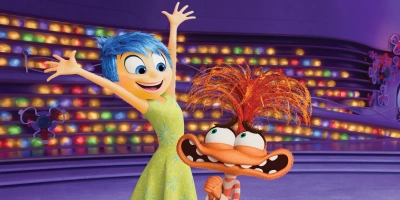
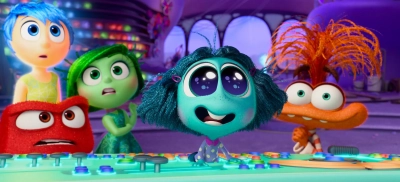
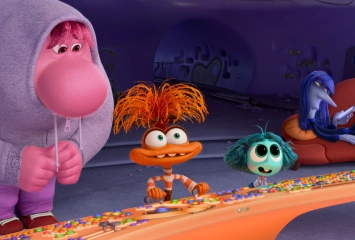
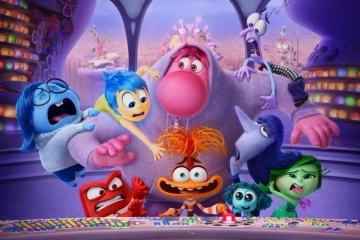

To download the app, you will get links to the Official Website and/or official digital markets.



